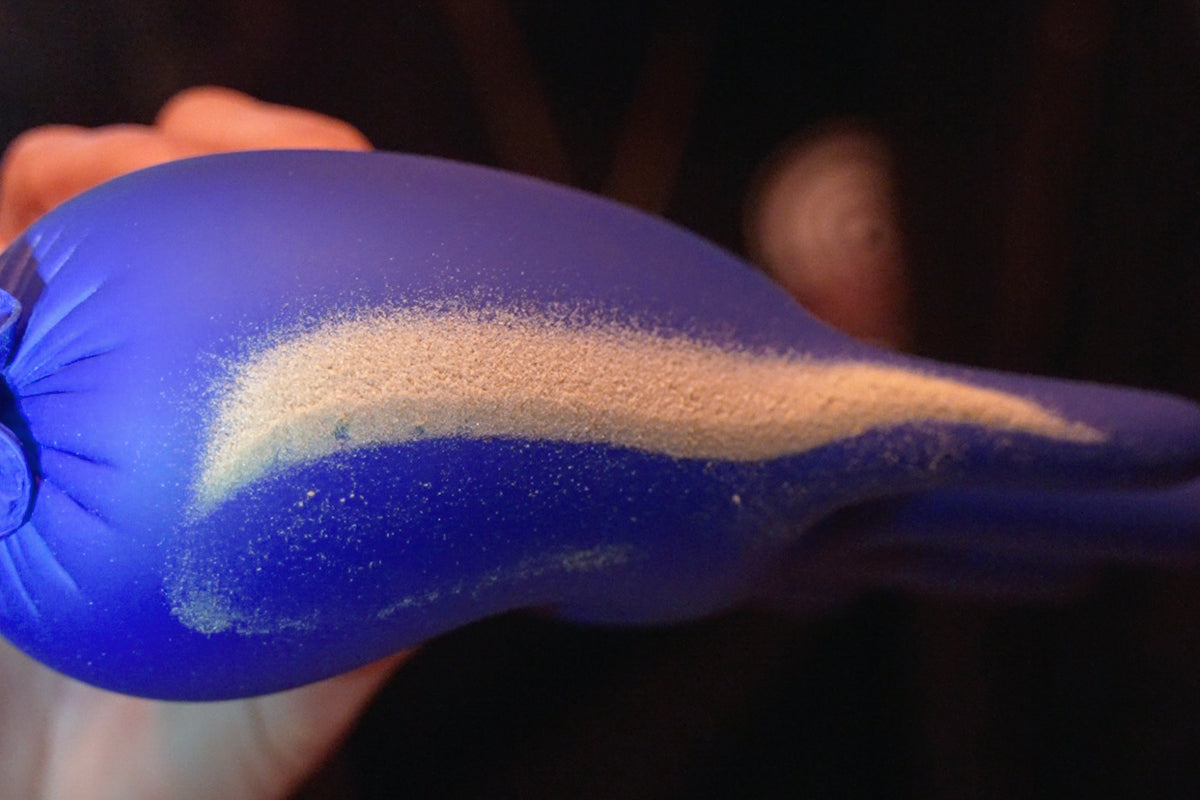How to Clean Dry Sift Hash Using Static Tech

LevciCleaning dry sift with static tech is one of the most effective ways to remove unwanted plant materials and upgrade your hash. Even if you’ve sifted carefully using mesh screens, your dry sift may still contain tiny bits of plant matter. These contaminants are too small to remove by hand and often pass through dry sift screens during the initial process.
Static tech uses static electricity to separate trichomes from debris and helps turn your dry sift into a high quality, solventless concentrate that melts cleaner, looks better, and performs more consistently.
Why You Need Static Tech
If you’ve made bubble hash before, you already know why it’s often considered the top-tier method for solventless extraction. Cold water helps separate trichomes with precision and produces some of the cleanest full melt hash available. But not every hashmaker has access to an ice water setup, lab space, or the budget to get started.
Dry sift gives you another path. By manually sifting cured cannabis over mesh screens, you can still separate trichomes heads and create a high quality solventless concentrate without any water or solvents. The trade-off is that dry sift often needs extra refinement.
That’s where static tech steps in. Whether you’re just getting started or working with limited tools, using static tech to clean dry sift helps you reach a more refined product without adding expensive equipment to your process.
How Static Tech Works
Static tech takes advantage of static electricity to attract plant matter and leave behind the good stuff. Lighter contaminants cling to the charged surface while trichomes remain on the screen or collect where you want them. This allows you to refine your dry sift without resifting everything through mesh screens or risking overworking your material.
Each method relies on the same principle: generate a static charge and use it to clean up your sift. Whether you use a CD case, a balloon, a paint roller, or the rubber glove method, you’re using static to separate trichomes from unwanted plant materials and improve your final result.


Common Static Tech Methods
CD Case Tech (The Original Static Method)
CD Case Tech is one of the earliest and most well-known ways to clean dry sift using static electricity. Marcus Richardson, better known as Bubbleman, helped introduce this technique in the early 2000s. He was one of the first extractors to focus on dry sift refinement and shared early techniques with other like-minded solventless heads in the community.
Another extractor named Meeze pushed the process further by introducing parchment paper into the workflow. That small tweak made static tech more effective and helped shape how people clean dry sift today.
To use this method:
-
Wrap a sheet of parchment paper around the edge of a clean CD or DVD case with the silicone side facing out.
-
Rub the case on a cotton shirt or towel to build up a static charge.
-
Spread your sift on a keeper screen.
-
Sweep the CD case across the top of the dry sift using light, steady pressure.
-
Keep the same edge of the case leading with each pass.
Trichomes will collect behind the leading edge while the plant material sticks to the front. Use a cold plastic card to collect the resin and discard the contaminants. Repeat until you've worked through the batch.
Paint Roller Tech
Paint Roller Tech builds on the same concept but uses a paint roller wrapped in parchment instead of a CD case. This gives you a larger surface area and helps clean bigger piles of dry sift faster.
To use it:
-
Wrap parchment paper around a clean paint roller with the silicone side facing out. Tape it securely.
-
Rub the roller on a towel or shirt to charge it.
-
Sweep the roller slowly across your dry sift, keeping one side of the roller leading.
-
Use a plastic card to remove resin heads from one side and discard debris from the other.
This method works well during the final stages of refinement or when cleaning sift in larger batches.
Balloon Tech
Balloon Tech is one of the easiest ways to experiment with static cleaning. It requires almost no setup and works well for small amounts of dry sift.
To use it:
-
Inflate a balloon or robber glove and rub it on a towel or shirt to generate static.
-
Hover the balloon just above your dry sift without touching it.
-
Let the static lift away plant matter while trichomes stay in place.
This method works best in cool, dry conditions. While it may not be as precise as other techniques, it’s a good way to get familiar with how static interacts with resin.
Rubber Glove Tech
The rubber glove method gives you the most hands-on control. It's especially useful for cleaning dry sift in small amounts or spot-treating contaminated sections.
To use it:
-
Put on a pair of clean nitrile rubber gloves.
-
Rub your gloved hand on a mesh screen, cotton towel, or shirt to build up a static charge.
-
Hover your hand just above the sift and gently move in circular motions.
-
The static will attract trichomes to the glove while lighter debris falls away.
-
Use a cold card or soft brush to collect the heads from the glove.
Cleaning dry sift with rubber glove static tech gives you the ability to focus on detail work, especially when refining already well-sifted material.


Tips for Better Results
-
Keep your tools and environment cold to prevent trichomes from becoming sticky.
-
Always lead with the same edge when sweeping to keep plant matter and resin separate.
-
Work in a clean, low-humidity space to boost static charge.
-
Stay patient and repeat the process as needed.
What to Expect
Static tech is not a one-pass solution. You may need several rounds to get the final product where you want it. How clean your hash gets depends on your starting material, technique, and environment. With practice, you can turn average sift into a high quality, dab-worthy solventless concentrate.
Common FAQs About Static Tech
Does static tech work on all types of dry sift?
Static tech works best on sift that has already been through a few rounds of screening. Start with refined material for the best results.
Can I use household items?
Yes. CD cases, balloons, and paint rollers all work well. Just make sure everything is clean and lint-free.
Why is my dry sift still green after static cleaning?
You may still have too much plant matter in your material. Go back a step and use finer mesh screens before trying static tech again.
How many times should I repeat the process?
If you’re pressing your sift into rosin, one or two passes might be enough. For dab-ready hash, expect to go through several cleaning rounds.
Is static cleaning safe for trichomes?
Yes, as long as you use cold tools and gentle motion. The goal is to separate trichomes, not smash them.
Keep Learning
Looking to take your dry sift skills even further? You might also like our guides on:
- Guide to Micron Bag Sizes for Rosin Presses
- How To Increase Bubble Hash Yields
- How to Set Up the Perfect Home Bubble Hash Lab



